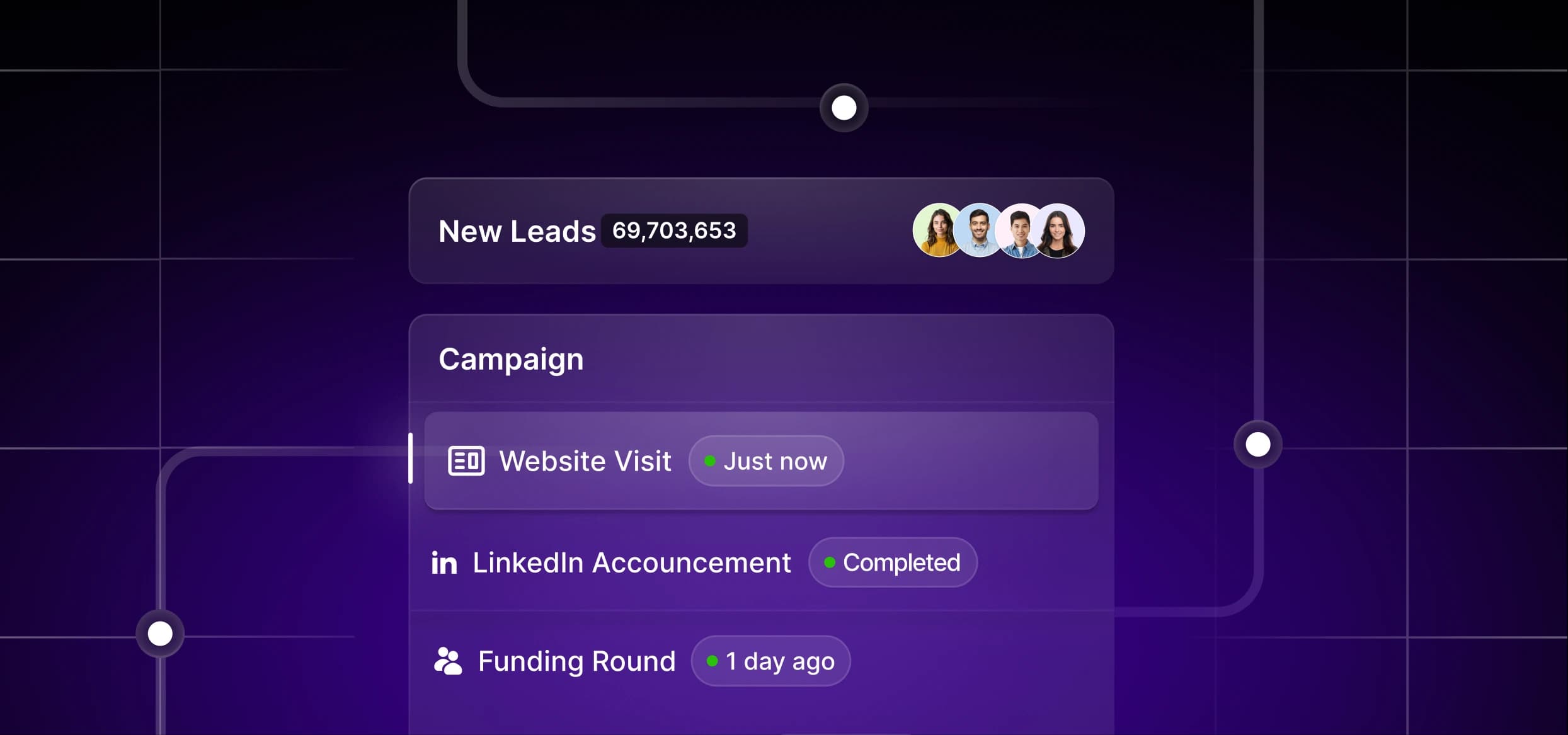So, you received dozens of cold emails last week. Nearly all were totally off. You’re wondering how the sender even got their hands on your email address.
But one stood out. It spoke directly to your pain point.
How did they know what you’ve been struggling with?
The secret is that they were tracking intent signals. They knew what you were ready to talk about.
What Are Intent Signals?
Intent signals, also known as buyer intent data, are digital breadcrumbs your prospects leave on the web. They are online activities that suggest a potential buyer is considering a purchase, such as anonymous website visits, webinar sign-ups, pricing page clicks, or social media posts on a specific topic.
Definition and Context
In B2B sales, purchasing decisions are complex and involve multiple decision-makers (over five people, to be specific). Buyer intent data helps you time your outreach to strike while the iron is hot and personalize your marketing message. According to a Forrester survey, over 85% of B2B companies using intent data reported higher outbound email response rates and more successful sales prospecting.
Here are the types of intent signals that surveyed companies used most often:
Firmographic and technographic signals (company size, industry, tech stack)
Behavioral signals (reading a whitepaper, visiting product pages, comparing features)
Third-party intent data (e.g., Bombora, G2) showing purchase intent across platforms
Why Intent Signals Matter
Without intent data, you turn to a spray-and-pray approach, targeting your ideal customer profile (ICP) with no clue who’s actually considering a solution like yours.
That’s how you burn through business development representative (BDR) hours and end up with cold emails left unanswered (or worse, flagged as spam).
Intent signals matter for the following reasons:
Sales teams can optimize who they contact, when they reach out, and what they say.
Marketing campaigns become targeted and personalized.
Lead scoring becomes grounded in actual purchase intent, not just firmographic assumptions.
In one case study, a leading enterprise SaaS company used CustomerBase AI to combine first-party website data with third-party intent signals, achieving a 35% lift in conversion rates, a 50% higher MQL-to-SQL ratio, and shorter sales cycles.
All that happened thanks to a comprehensive intent signal tracking and analysis system.
In another example, Bynder’s sales team used AI-powered intent data providers such as 6sense to identify in-market accounts. Sending the right messages to the right people resulted in a 2.5 times increase in outbound pipeline and a full return on investment within a short period of four months.

Types of Intent Signals and Data

Scott Gillum, founder of Carbon Design and all-around intent data whiz, argued that spikes in content engagement don’t equal active buying intent. Gillum researched across seven industries and found only 5–10% of cases where a “buyer intent” signal truly meant the prospect was in a buying cycle.
This shows that not all intent signals are a silver bullet. The key is to identify which ones work for you and build your outbound strategy around them.
First-Party Signals
These signals are drawn directly from how potential buyers engage with your website, CRM, or marketing emails.
Main types:
Website visits, especially to product pages, demo requests, or your pricing page
Resource downloads (e.g., a whitepaper, a case study, or research)
Webinar registrations
Email engagement (opens, clicks, replies, time-on-email)
CRM activity (repeat visits, lifecycle stage changes, lead source context)
Here’s how these signals look in a real-life scenario:
A contact scrolls your pricing page three times in one week, then downloads a case study about your “AI-powered SDR automation.”
That’s a high-intent signal, so your lead scoring model should label it as “hot,” and your SDRs or BDRs take it from there.
But how do you capture that?
Use tools to capture engagement points, like landing page views, webinar signups, and case study clicks.
Score leads in your CRM based on signal strength and frequency (e.g., 10 points for a pricing page visit and 15 for a case study visit). Prioritize the highest scorers for SDR follow-up.
Enrich lead records with firmographic (e.g., 500+ employees in fintech) and technographic data (e.g., using HubSpot and Salesloft) to qualify the fit and route to the right rep.
Third-Party Signals
These come from intent data providers, social media, and third-party platforms. They are signals you buy or detect externally.
Main types:
Topic-level engagement from Bombora, 6sense, or Artisan
Social listening on LinkedIn, X/Twitter, and Reddit
Review site behavior (e.g., G2 browsing of competitor categories)
In practice, tools like 6sense or Artisan tell you which person or company posts about the problems you can resolve.
For example, a director at a mid-market fintech company downloads two whitepapers from a competitor and uses the keywords “sales enablement” and “revenue operations” in 6sense. Even if they’ve never heard of you, that’s an in-market signal, so your outreach should act like it.
An AI tool like Artisan, which has a comprehensive set of tracking features, also tells you if a prospect seeks help on social media and elsewhere, bringing those posts to your dashboard.
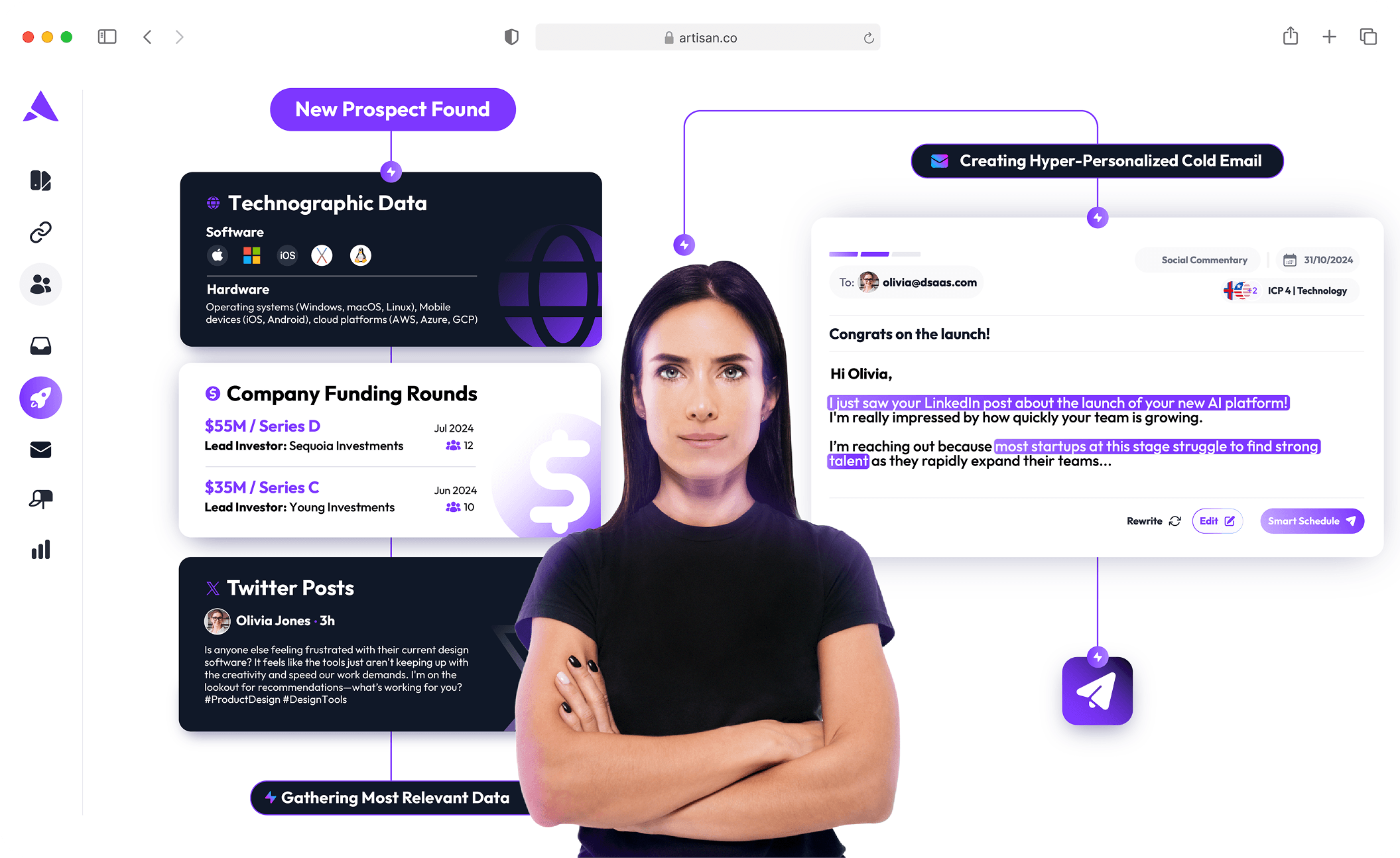
Combined Signals
Gillum from Carbon Design advocates for blending your first-party engagement data with third-party intent data, as intent data from non-internal sources should augment, not replace, a deep understanding of the buyer’s context. Notably, over 70% of B2B companies use multiple intent providers to combine different signal types, according to Forrester.
Let’s learn through an example:
A website visitor from a target account reads your blog post on “AI SDR workflows,” then shows activity on Bombora around the topic “sales automation platforms.” Now you’ve got a few solid data points across channels that signal to your BDRs that there’s a conversation waiting to happen.
You can also automate this process using listening and outreach solutions.
B2B sales tools like Artisan or 6sense let you:
Monitor behavior on your site and across partner ecosystems.
Trigger automated email campaigns, social media outreach, and SDR follow-ups based on cumulative scores.
Blending signals also lets you differentiate between low-intent noise (e.g., one ebook download) and high-intent momentum (repeat visits, across multiple platforms, in a short window).
Why Intent Signals Matter for Sales and Marketing

Sales and marketing agree on one thing: the other team is probably missing good leads. Oops.
Intent signals fix that. When both sides see the same real-time buyer behavior, they can finally align on who to target, when to engage, and what to say.
Sales Teams
For reps buried under thousands of “maybe someday” leads, intent signals act like a metal detector. They help surface in-market buyers based on real-time behavior, not just job title matches.
Key benefits:
Prioritize target accounts based on activity like LinkedIn profile views and webinar registrations.
Shorten sales cycles—you’re catching the buyer while they’re researching solutions.
This means you can craft personalized messaging that references actual pain points or actions.
This turns your outbound from “cold outreach” into “timely relevance.”
Marketing Teams
If you’re a marketer running ABM and lead gen, intent data helps you to cut spend on low-fit leads and zero in on accounts actively researching your solution. And 48% of marketing professionals agreed on that, according to a survey by .
Key benefits:
Sharpen account-based marketing by matching ICP and buyer personas with intent data.
Align content creation and distribution to serve relevant material to mid and bottom-of-funnel leads (e.g., case studies, whitepapers, social media posts, or podcasts).
Key Intent Signals to Track
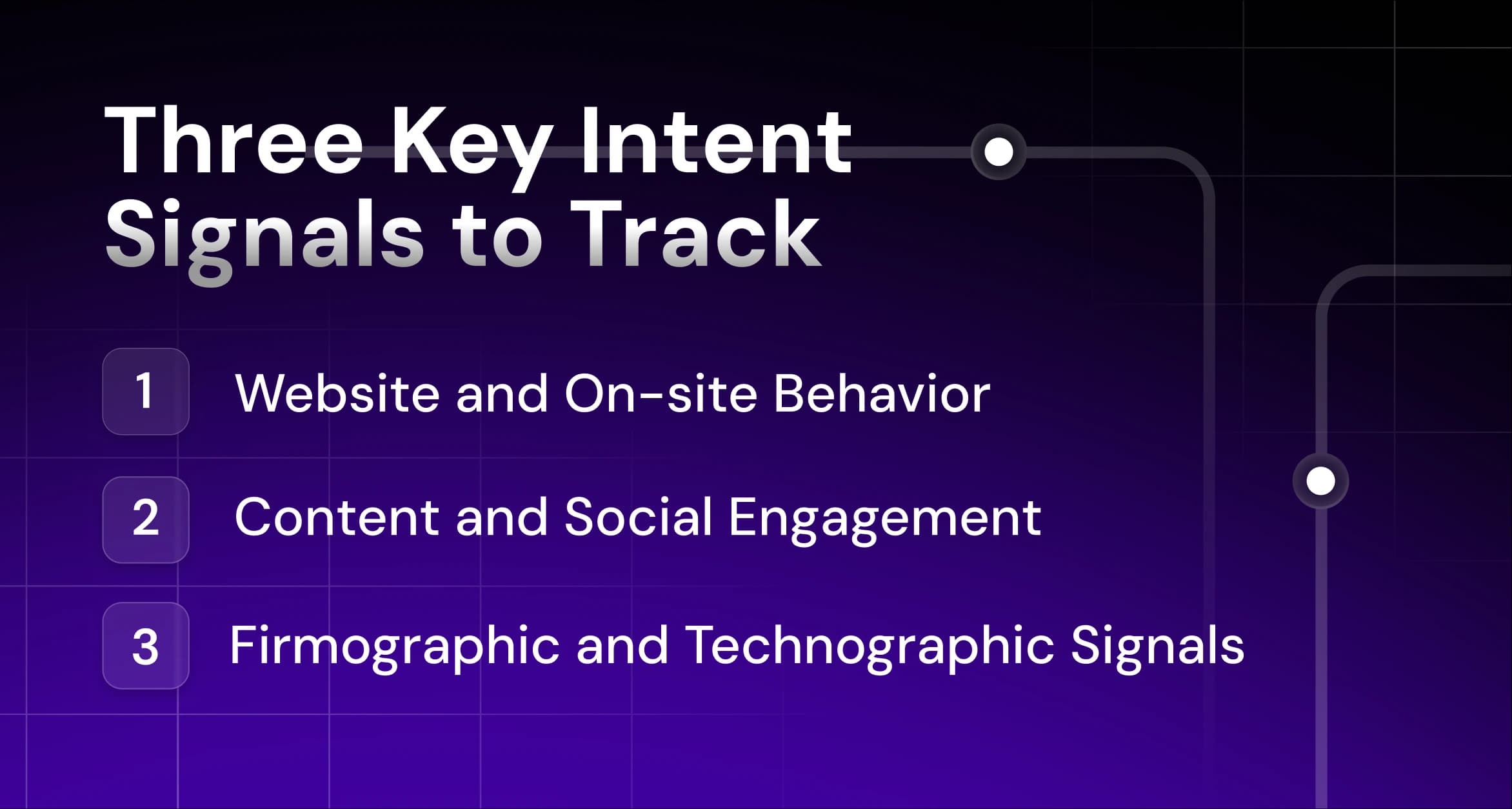
The key to identifying high-value, in-market prospects is to monitor the right intent data sources across every stage of the buyer journey.
Website and On-Site Behavior
These first-party intent signals show what potential buyers are doing on your digital properties. They’re the most direct indicators of interest in a specific product and are foundational for lead scoring and triggering real-time automated workflows.
Track the following on-site signals:
Visits to product pages and the pricing page
Number of sessions and repeat visits (e.g., 3+ page visits)
Scroll depth and time on site
Clicks on CTAs and navigation patterns
Form submissions (demo, contact, newsletter, trial)
Resource downloads (ebooks, guides, tools, calculators)
Behavior on landing pages tied to marketing campaigns
To filter leads, designate several fields in your forms for lead qualification. Artisan, for example, wove in “Job Title” and “Company Size” on their demo sign-up page.
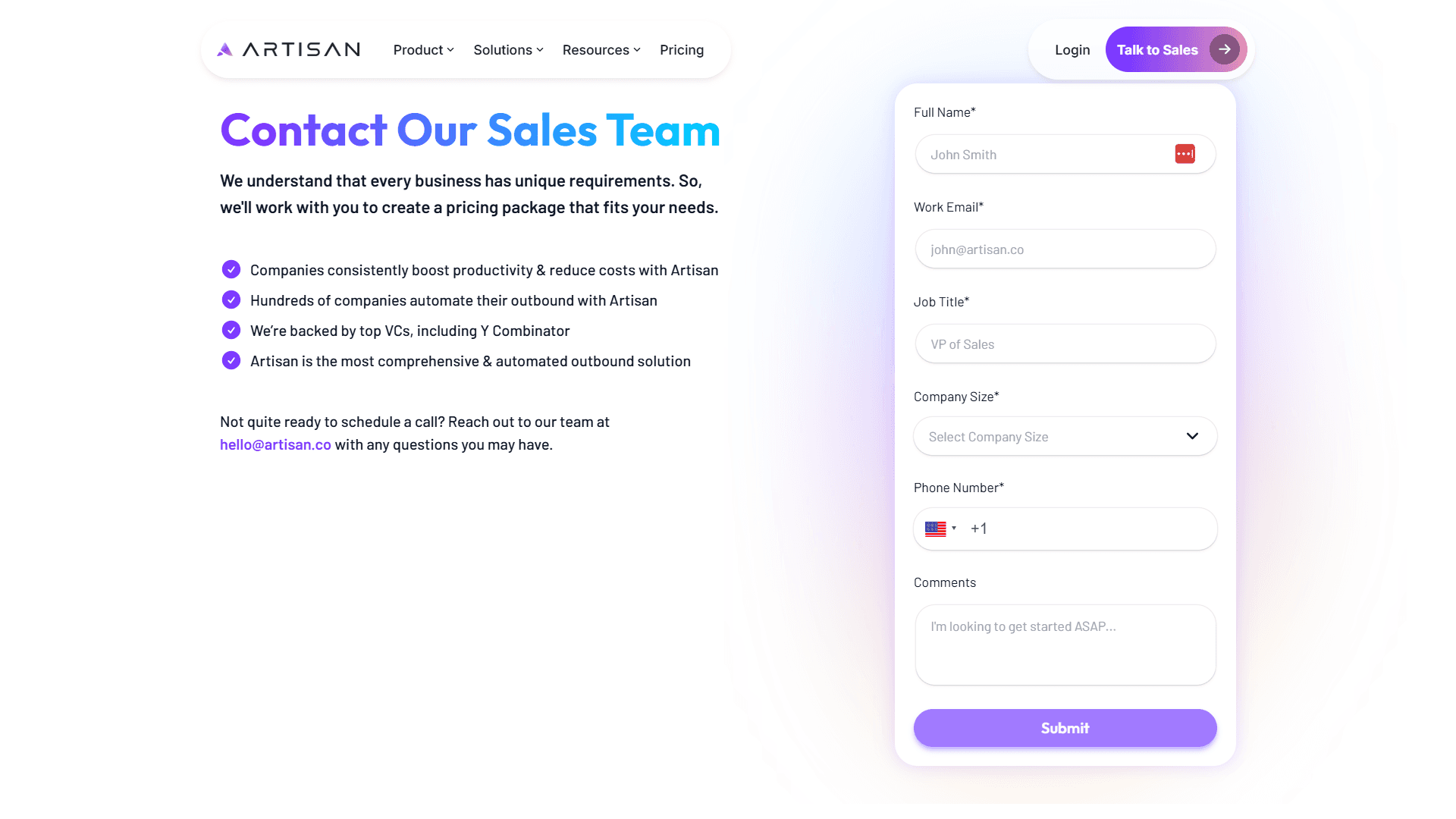
Content and Social Engagement
These signals indicate buying intent in public and reveal early-stage prospects, allowing you to personalize outreach.
Here are the most important social and content signals:
Template, checklist, and whitepaper downloads
Webinar registrations and attendance (live or on-demand)
Webinar attendees on a LinkedIn event page
Blog post views, especially bottom-funnel topics
LinkedIn likes, comments, and shares on relevant content
LinkedIn engagement with your or your company’s profile (profile visits, follows)
Mentions, replies, or follows on X
Firmographic and Technographic Signals
Think of these as the filters that make the rest of your intent data actionable. If a lead is showing activity but isn’t a firmographic fit, you’re just wasting time.
Firmographic data comprises the following:
Company size (employee count, revenue band, customer base)
Industry vertical (B2B SaaS, manufacturing, healthcare)
Geographic location or operational region
Growth stage (startup series A–B, midmarket, enterprise, public)
Job titles and department structure (decision-maker signals)
Technographic data covers activity related to technology:
Installed CRM (e.g., HubSpot, Salesforce, Pipedrive)
Sales tools in use (e.g., Sales Navigator, Artisan, 6sense)
Marketing automation platforms (e.g., Marketo, ActiveCampaign)
Complementary tools in target account’s tech stack
Use of competitors and intent to switch
Use these signals to build enriched target account profiles and route qualified prospects to the right outreach or lead nurturing workflows.
Using Intent Signals to Power Outbound Outreach

Now that you know what to track, here’s how to actually use those intent signals to drive better B2B sales with faster follow-ups, smarter messaging, and higher conversion rates.
Lead Scoring and Prioritization
Assign weight to different actions so your CRM can highlight high-intent leads automatically.
Here’s a scoring model example:
Pricing page view or demo request = 40–50 pts
Webinar sign-up or whitepaper download = 30 pts
LinkedIn like or blog view = 10–20 pts
Then, create a lead scoring workflow in your CRM:
Map scores to HubSpot or Salesforce as an “Intent Score” field.
Set rules such as “score > 60 = auto-assign to a BDR with a task for next-day follow-up.”
Use CRM automation to route leads based on firmographic and technographic fit.
Set up score thresholds to categorize leads based on value.
Personalizing Messaging and Channels
Intent doesn’t just tell you who to reach; it tells you what to say. Once intent signals show that a lead is qualified, the next step is to craft messaging that matches their behavior.
If a prospect shared a hot take, hiring news, or engaged with your lead magnet, for example, don’t greet them with a generic “Hope you’re well” opener. Use the signal to anchor your message.
Here’s a sample email template for cold outreach:
Hi [First Name],
Saw your team’s rollout of [mention project, product, or initiative]. Impressive move!
We've been helping companies like yours achieve [specific process or goal] without adding extra complexity.
Thought it might be worth a quick intro—happy to share our case studies if you're open.
Best,
[Your Name]
Your choice of outreach channel matters too. If a contact engaged with your LinkedIn post, send a personalized InMail or a connection request, mentioning that interaction. This tactic will likely outperform a cold email.
On the other hand, if the prospect has shown interest exclusively through on-site behavior, email might be a better entry point.
An AI BDR tool like Artisan tracks intent signals in real time and composes irresistible cold emails. This means you can automate and scale personalized messages for no additional cost or rep hours.
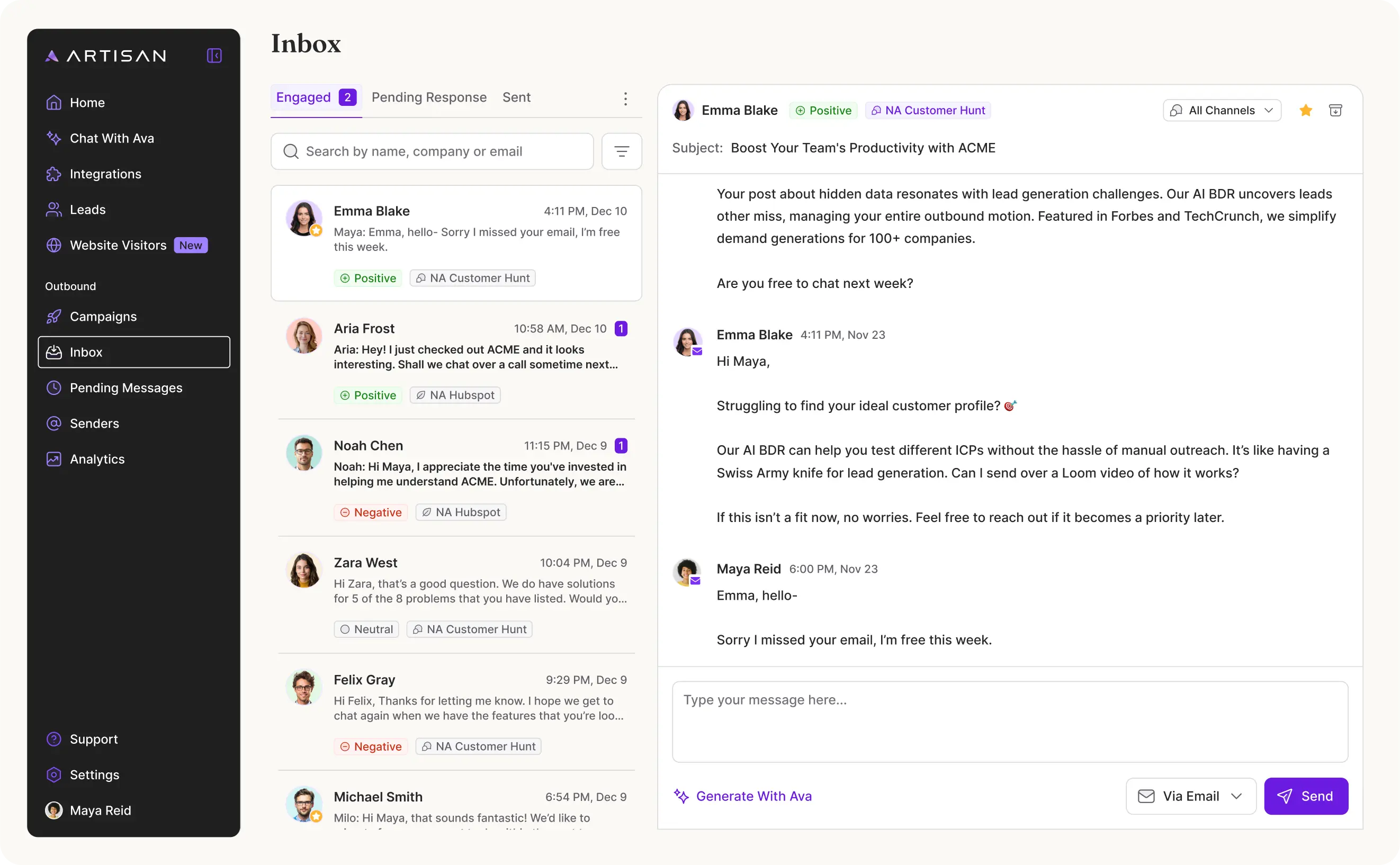
Timing and Automated Workflows
Intent signals are real-time clues. The faster your sales team acts, the higher your conversion rates.
Start by setting up real-time triggers inside your CRM or intent platform. For instance, if a lead from a target account downloads an ebook and also matches your ICP, your system should immediately fire an internal alert via Slack, email, or directly within the CRM.
From there, the lead can be enrolled in a pre-built, multi-touch outreach sequence without manual handoff delays. Integrate tools like Artisan with your CRM to set if-this-then-that rules around intent behavior and trigger the right outreach campaigns.
For example, if an account views a product comparison guide, has 200+ employees, and uses HubSpot, enroll them in the “high-fit automation workflow” with a personalized first touch.

Using Intent Signals in Marketing Campaigns
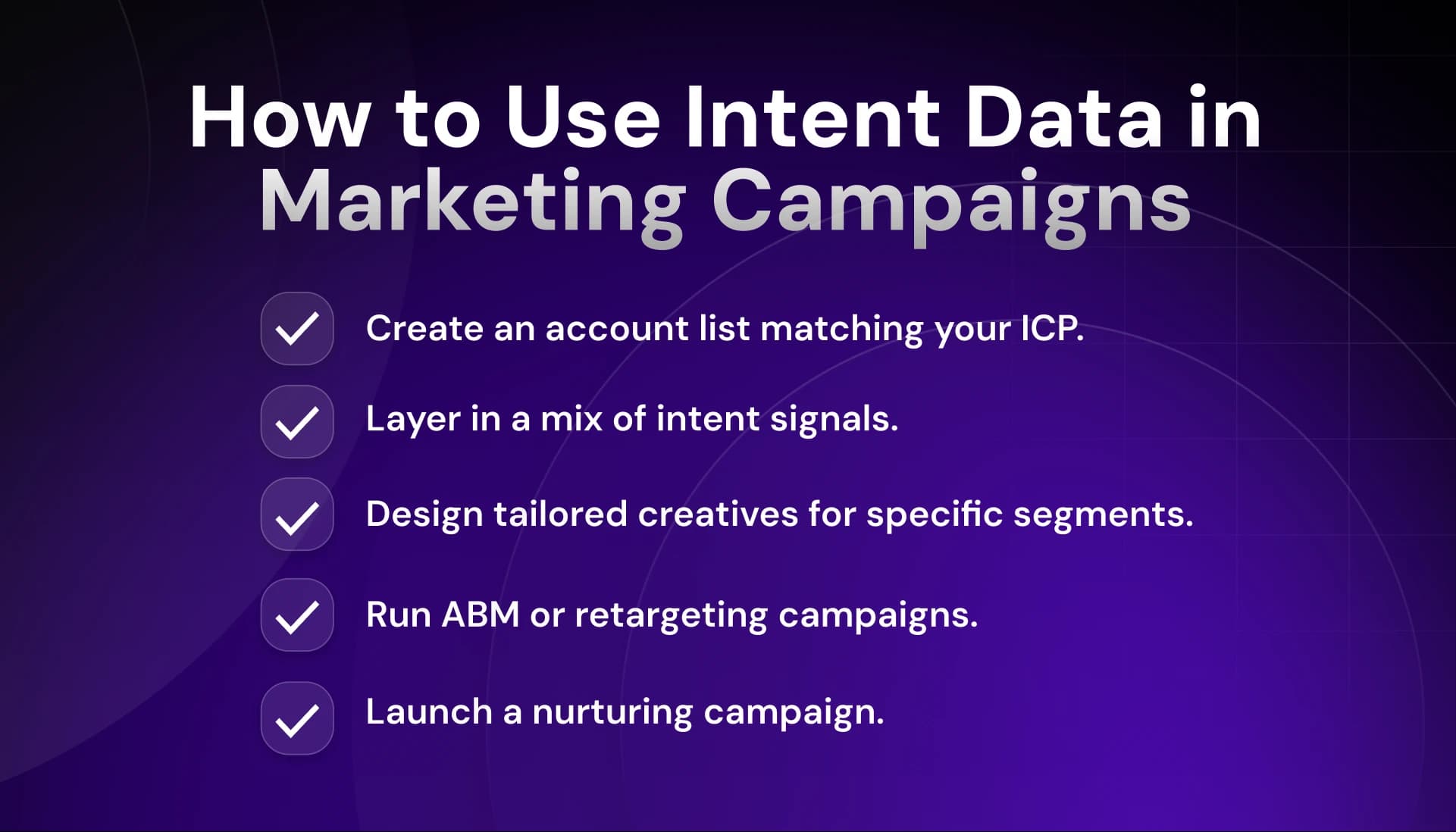
Intent signals help your sales team hit quota with behavior-based campaigns and allow them to double down on the accounts that matter most.
Use these two tactics to deliver great leads to your reps.
Targeted Campaigns and ABM
Start by building your target account lists using your ICP (e.g., fintech firms with 100–500 employees) and layering in intent signals from tools like Bombora, 6sense, or LeadSift.
Once you have that list, deliver customized content tied to their demonstrated interests. If a prospect surges on topics like “sales automation platforms” or “AI outbound,” serve them case studies like “How FinTechCo Scaled Pipeline with AI SDRs.”
The content is rooted in real buyer behavior, so the campaign is likely to yield a good number of SQLs.
Take Lucid software, for example. Their intent-based ABM campaign literally fueled the sales pipeline and delivered mind-blowing results.

All they did was combine LinkedIn's first-party data with third-party intent data (via 6sense) to identify in-market accounts and show tailored content to each account through LinkedIn sponsored content, display ads, and conversation ads.
Then, the marketing department passed accounts showing high intent directly to sales reps for timely follow-up.
Nurture and Retargeting
Not every intent signal leads to an immediate conversation, but it can fuel a long-game strategy.
For example, when a potential customer interacts with gated content or visits your site multiple times, automated marketing can keep your brand top of mind.
How?
Use intent-driven email nurture sequences to guide the prospect deeper into the funnel. For example, if they downloaded a case study about scaling outbound teams, enroll them in a drip campaign that shares follow-up content: blog posts on lead scoring, videos on SDR onboarding, and an invite to your next webinar.
For example, HubSpot sends emails to landing page visitors who haven’t even made a demo request. They track these signals and add prospects to nurturing campaigns.
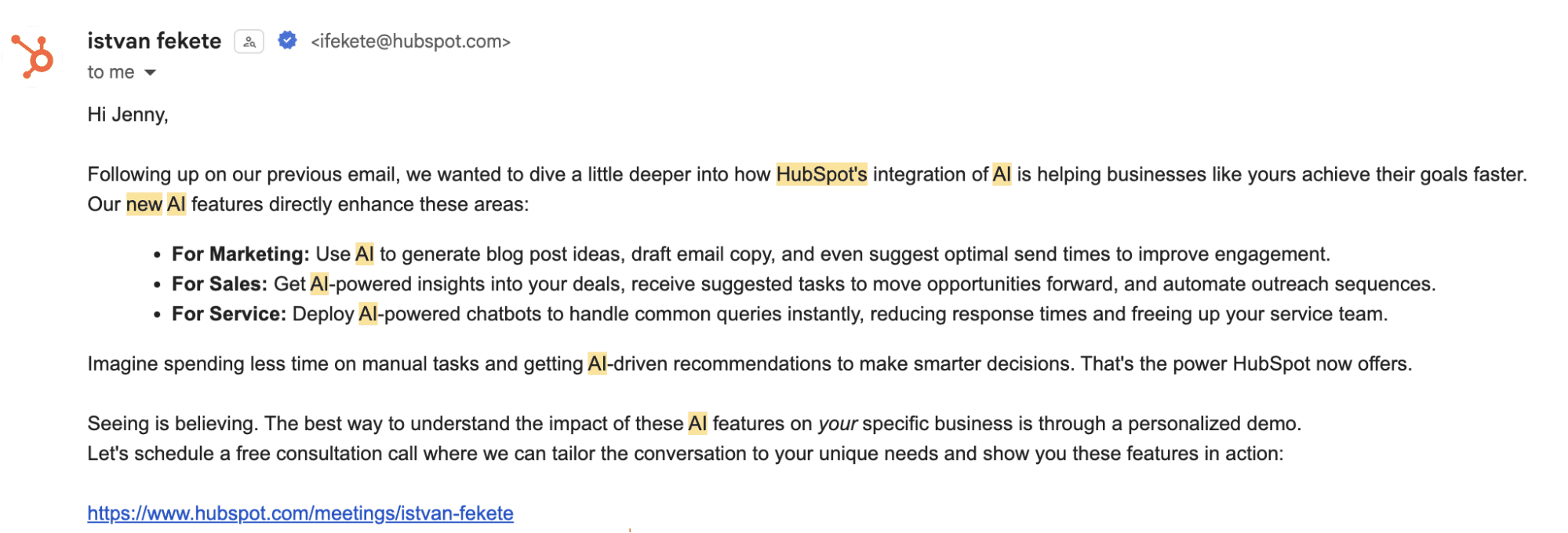
You can also use dynamic retargeting to follow site visitors across LinkedIn and Google with tailored ads.
As always, don’t forget to measure impact. Compare your MQL to SQL conversion rates before and after integrating intent filters into your campaigns.
Automation and Tools for Intent Signals
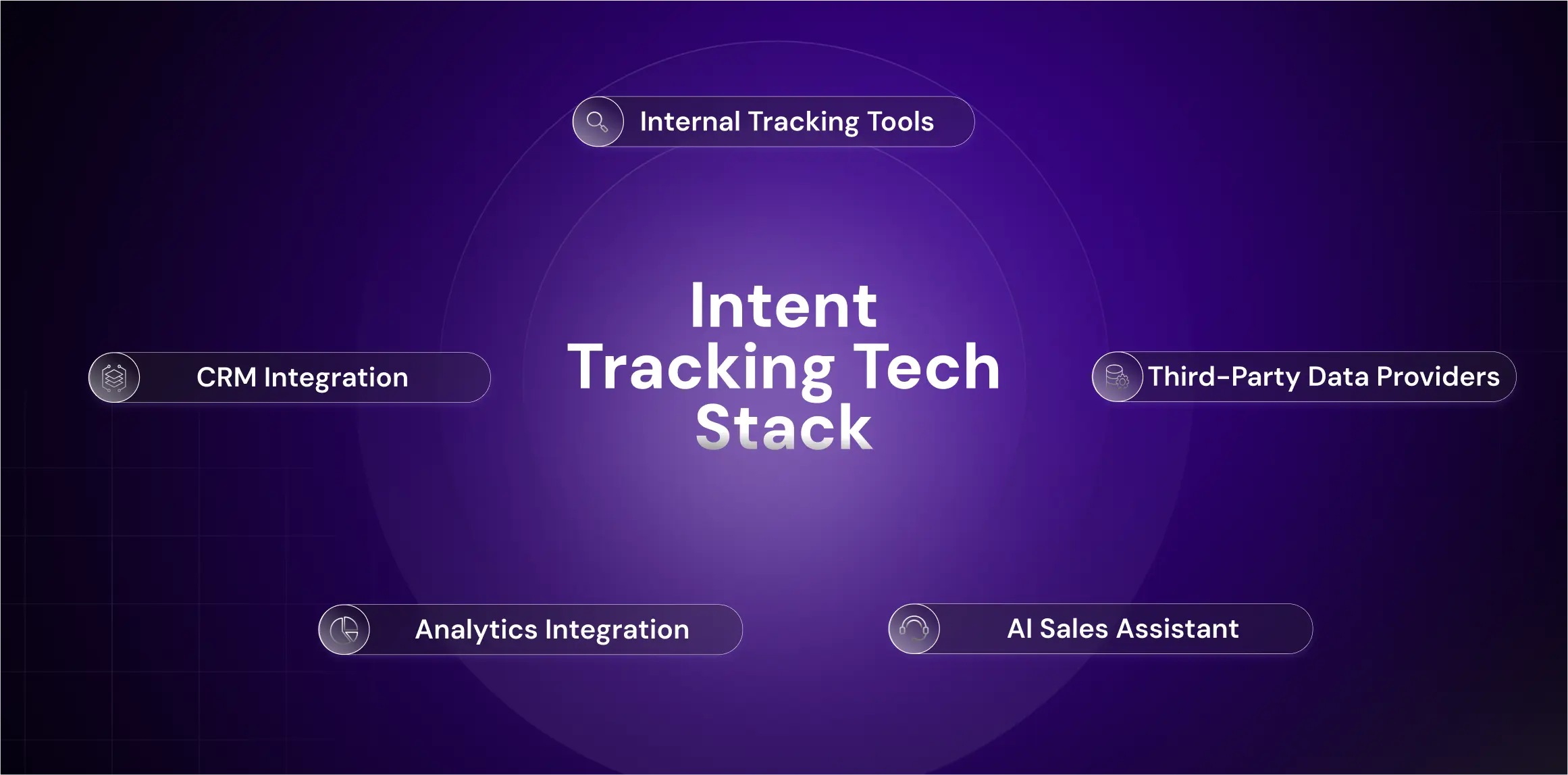
Intent signals are only as powerful as your ability to act on them—fast and accurately. That’s where automation, AI, and your tool stack come in. A comprehensive setup lets sales and marketing tap into the same real-time signals and stay aligned.
CRM, Analytics, and Intent Providers
Here’s how to activate intent signals and connect data across systems:
1. Set up your CRM: Feed website visits, email engagement, and form fills into HubSpot or Salesforce so intent actions automatically log under every contact or account. Use custom fields like “Intent Score,” “Last High-Intent Action,” and “Topic Surge.”
2. Choose intent data providers:
Bombora: Detects account-level interest based on topic surges and content consumption across the web.
6sense: Offers predictive modeling using third-party data, technographics, and CRM activity.
G2 Buyer Intent: Tracks which companies are browsing your profile or competitor listings on G2.
3. Build analytics integrations: Pull in data from Google Analytics, marketing automation platforms like Marketo, and your CRM for a unified view of which accounts are most engaged and why.
AI Sales Assistants and Workflow Automation
Now let’s talk execution: your use of AI to scale personalized, signal-based outreach. We’ll use our platform as a practical example. Artisan is an AI-first sales solution that gives go-to-market and sales teams the building blocks for scalable outbound automation based on real buyer intent.
Here’s how it works:
Signal capture: Artisan tracks third-party intent like the lead's product updates and recent blog posts, social media, posts, press releases, and funding announcements. She then maps them onto lead profiles to indicate temperature.
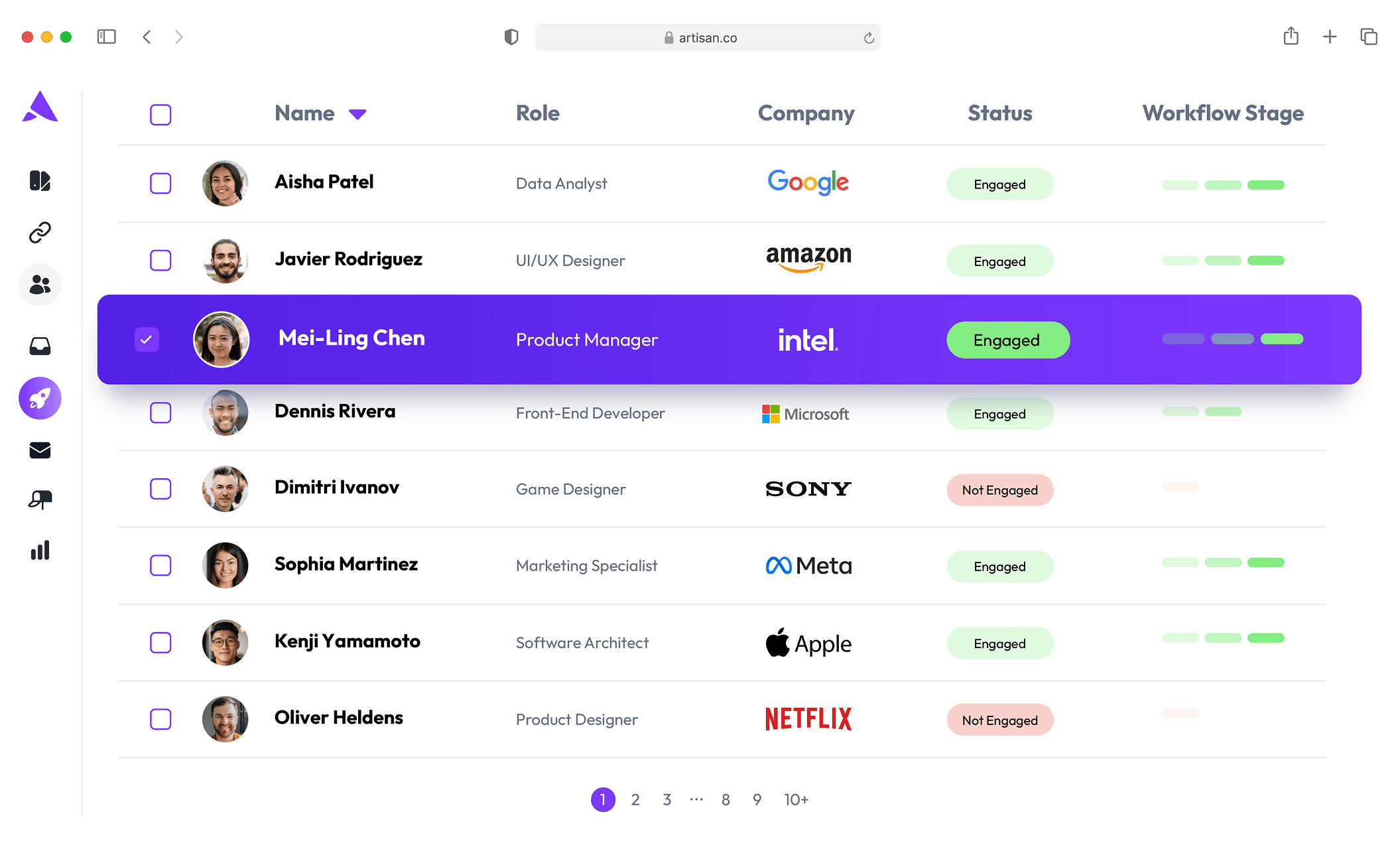
AI-driven outreach: When a lead hits an intent threshold, Artisan auto-launches a personalized sequence across email and social media tailored to that lead’s behavior and profile.
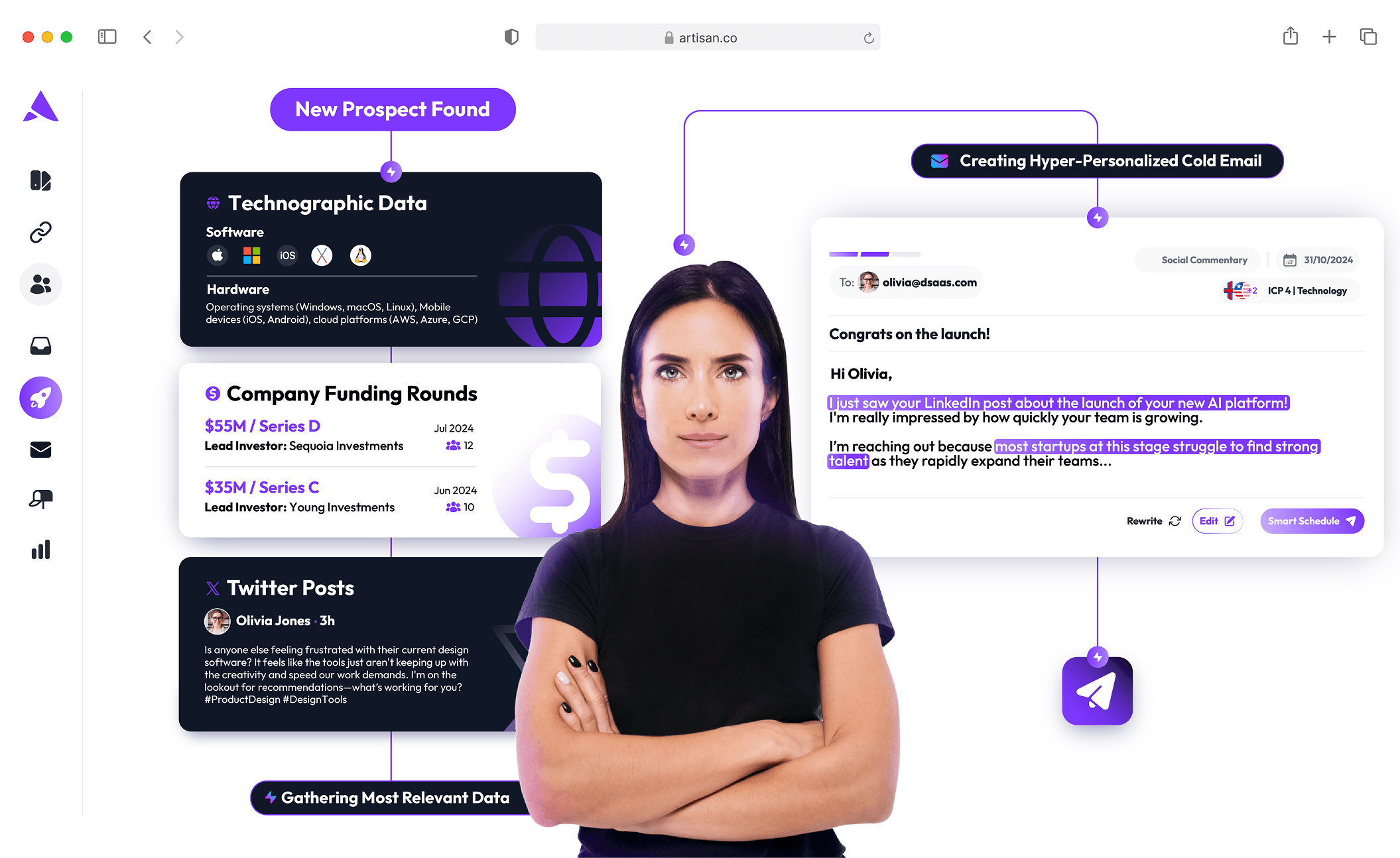
CRM enrichment and deliverability: Artisan enriches all leads with firmographic and technographic data, validates emails, and improves email deliverability with hygiene checks.
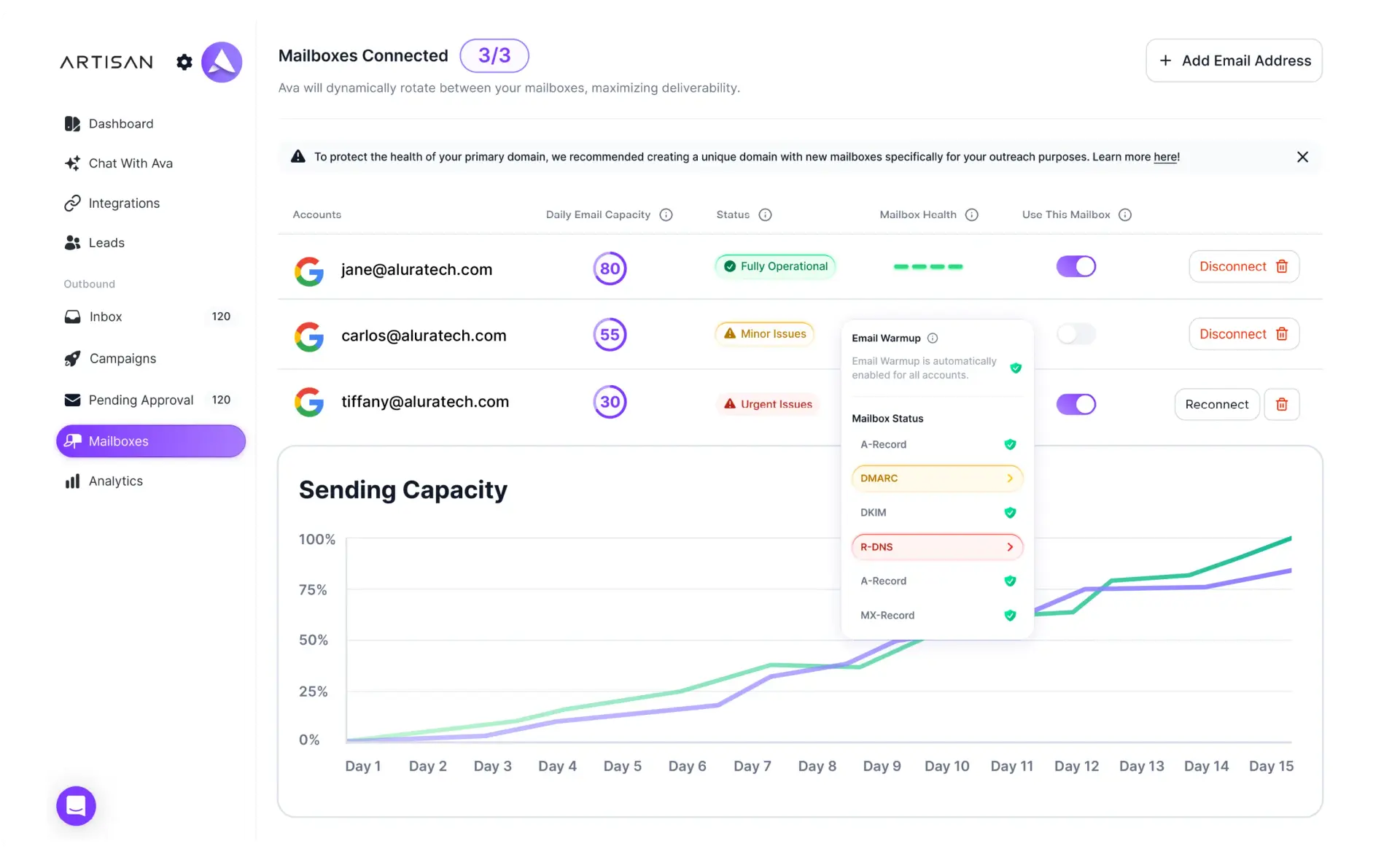
Together, these features transform intent signals into fully automated outbound workflows, reducing manual handoffs and increasing cold email reply rates.
Best Practices and Next Steps
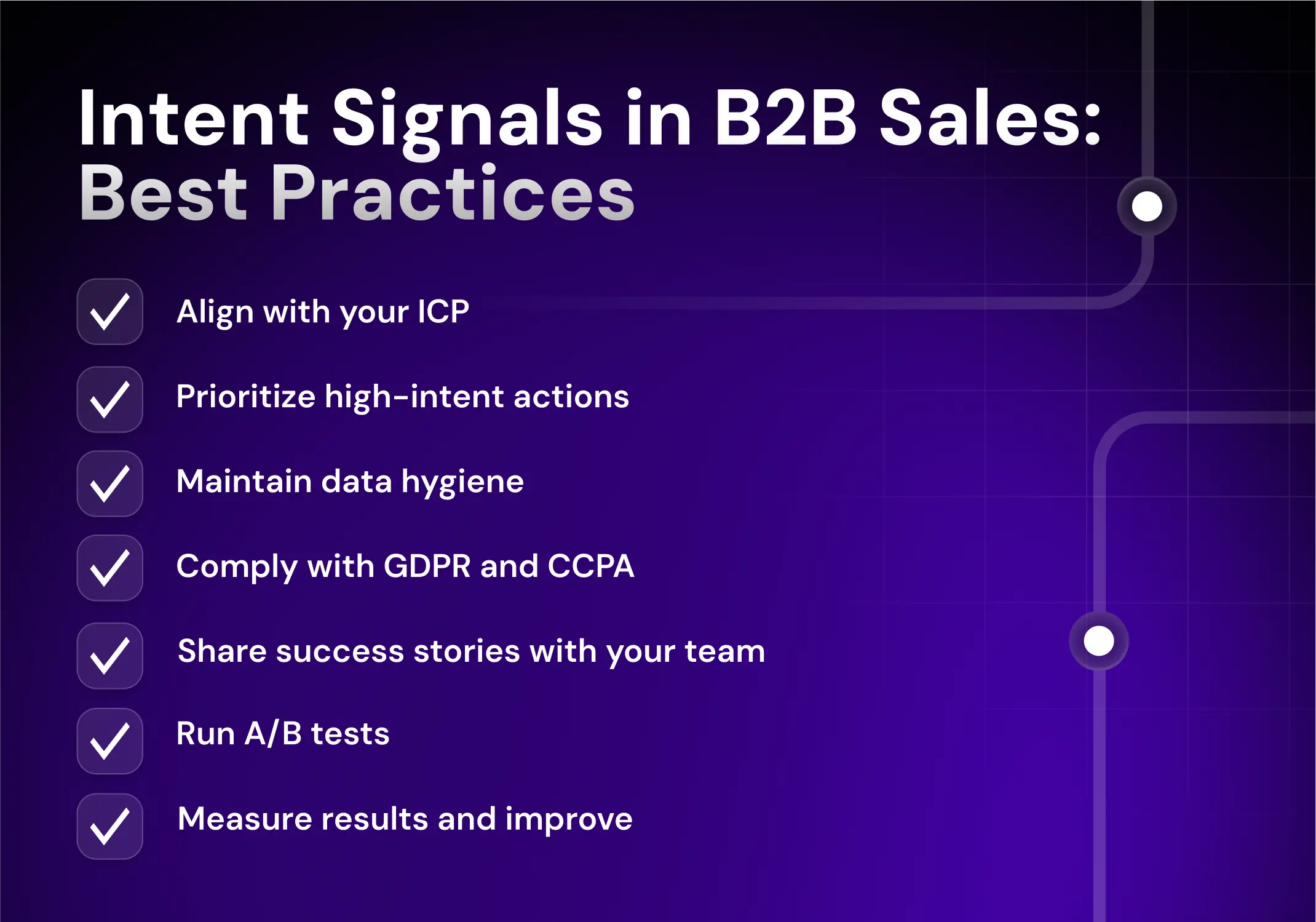
So you've got intent signals flowing in. Now what? Use them to drive sharper targeting, cleaner outreach, and campaigns that feel like a warm handshake.
Align With Your ICP
Intent doesn’t matter if it’s coming from the wrong people. If a five-person media agency downloads your case study but you sell to 500+ fintech teams, that’s a waste of time. Filter ruthlessly.
Audit your buyer personas every six months: company size, vertical, region, and tech stack. The market shifts, and your outreach should shift with it.
Focus on High-Intent Actions
Someone glancing at your blog post is nice. Someone hitting your pricing page three times in 48 hours? That’s very nice.
Prioritize actions that show real buying intent, like demo requests and bottom-of-funnel downloads. Save the lightweight stuff (LinkedIn likes, blog scrolls) for nurturing campaigns, and let AI workflows handle them.
Maintain Data Hygiene and Compliance
No sales rep wants to follow up with “no-reply@acted-inc.” Clean data fuels effective workflows. Run regular hygiene sweeps to deduplicate contacts, verify emails, and tag firmographic and technographic fits.
If you’re using third-party intent data, make sure it’s compliant (hello, GDPR and CCPA) and sourced from vendors you actually trust. No sketchy clickstream scraping.
Share Success Stories
If intent-driven outreach helped your SDR team book three times more meetings or shorten sales cycles, don’t keep that quiet. Broadcast the win.
These micro-case studies help marketing and sales stay aligned on what’s working. They also build the internal momentum you need to scale a truly intent-led strategy.
Test, Measure, and Iterate
Run A/B tests on everything: lead scoring thresholds, messaging angles, cadence timing. Also watch your crucial funnel metrics: MQL-to-SQL conversions, CAC, pipeline velocity. Then double down on the signals that actually move the needle.
Review scoring logic once in six months. What worked last season may no longer cut it.
Intent Signals Power Your Pipeline
Here’s the truth: most outbound outreach fails because of poor timing.
Intent signals flip that.
They let your sales team show up when buyers are more likely to convert.
If you’re still treating all leads the same, still blasting cold sequences to a static lead list, it’s time to level up. Intent signals are how modern teams win. And with the right tools, like Artisan, you don’t just react to interest, you predict it.

